Everest Base Camp Trek Weather Guide
Everest Base Camp Trek: OverviewActually, Everest Base Camp Trek is a world-class Himalayan trek in Nepal. It leads to the foot of Mount Everest...

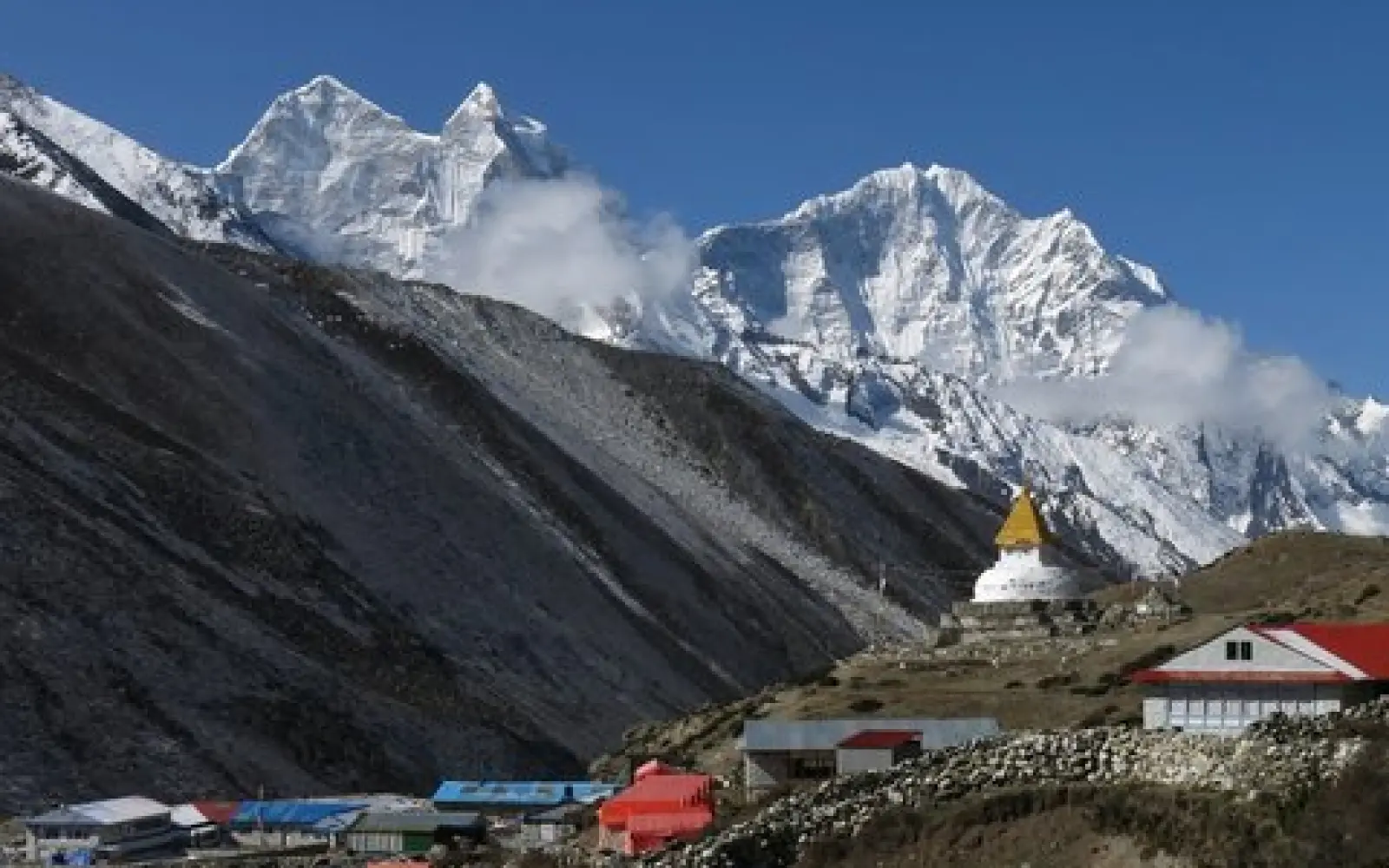
Dingboche is a beautiful high-altitude village in Nepal's Everest region. It is situated at an elevation of 4,410 m above sea level. The village falls under the Khumbu region and is situated along the renowned Everest Base Camp Trek. Trekkers normally rest and acclimatize here before proceeding further to higher places like Lobuche (4,910 m) and Gorakshep (5,164 m). In fact, Dingboche is the second day acclimatization on Everest Base Camp Trek.
Compared to lower villages like Lukla and Namche, Dingboche is a wide and open valley. This is thus sunnier and less windy than Pheriche on the other side of the ridge. Because of this reason, many individuals prefer to camp overnight in Dingboche. It offers stunning views of Ama Dablam (6,812 m), Island Peak (6,189 m), and parts of Makalu (8,481 m) on clear-view days.
Likewise, the Dingboche village also has green terraced fields, which are not common at such altitudes. People cultivate barley and potatoes during short summer periods. Sherpa culture dominates here. Prayer flags, rock chortens, and carved mani walls mark dominant Buddhist customs. Tourists can enjoy the spiritual atmosphere while relaxing and acclimatizing to the altitude.
Moreover, Dingboche offers plain but comfortable housing for trekkers. There are teahouses, lodges, small cafes, and equipment shops. Some of the lodges even have internet access, solar electricity, and first aid kits. Though plain, the service is adequate enough to provide a quiet stay.
In short, Dingboche is not only a trail stop. It's a spot to rest, acclimatize, and absorb Himalayan splendor. With its fresh air, mountain scenery, and Sherpa hospitality, Dingboche is a never-to-be-forgotten experience on the Everest trek.
Actually, Dingboche is uniquely positioned. It lies on the east bank of the Imja Khola, a river that bounces from Imja Lake near Island Peak (6,189 m). Dingboche valley is broad and sunny. Unlike Pheriche (4,240 m), which is shaded and cool, Dingboche is warm all day.
Meanwhile, mountains surround the Dingboche village from all sides. In the north stands gigantic Lhotse (8,516 m), and to the south looms Ama Dablam (6,812 m). Cholatse (6,440 m) and Makalu (8,481 m) are also seen from the surrounding ridges. These mountains make Dingboche one of the finest places to capture Himalayan scenery.
Moreover, the terrain of Dingboche is arid and stony but still allows for some farming. Fields are separated by walls of stone where residents plant barley and potatoes. Alpine flora, grasses which are short, and resilient shrubs are found scattered throughout the area.
In fact, treking trails connect Dingboche to nearby villages like Pangboche, Lobuche, and Chhukung. The trails cross river valleys, hillside, and glacial trails. Dingboche is also the route to side trips like Nagarsangn Hill (5,100 m) and Chhukung Ri (5,550 m).
In total, Dingboche geography is stunningly beautiful yet practical. Its valley with sunshine, open land, and middle location offer a perfect place for trekkers to rest, discover, and acclimatize in the Everest region.
Actually, the trek route to Dingboche passes through well-known villages like Phakding (2,610 m), Namche Bazaar (3,440 m), Tengboche (3,867 m), and Pangboche (3,985 m) to Dingboche. The route follows the Dudh Koshi River and then the Imja Khola. Trekkers traverse suspension bridges, forests, and stone roads. With a climb higher, the trail gets rockier and more exposed.
Likewise, the trek between Pangboche to Dingboche offers wide views of Ama Dablam (6,812 m) and Island Peak (6,189 m). The trek takes around 2–3 hours. The trek is gradual in its ascent, allowing trekkers to acclimatize adequately before moving to higher altitudes.
Moreover, helicopter downward journey is provided in situations of emergency. There is flat ground in Dingboche for helicopter landing. Helicopters are also utilized by some trekkers for quick downward journey if they experience altitude sickness or wish to descend more quickly.
While in winter or during adverse weather, the trekking route to Dingboche is icy or snowy. Therefore, the majority of trekkers trek during spring (March–May) or autumn (September–November), as there is clear weather and routes are secure.
Briefly put, Dingboche is reachable only by trekking from Lukla. The scenic trail takes a few days and passes through beautiful Sherpa villages. While cut off, the trail is clearly marked and used by many trekkers during every trekking season.
Meanwhile, teahouses and lodges in Dingbcohe are the mainlodgings. They generally offer clean twin rooms, blankets, and communal toilets. There are toilets inside the rooms in some of them, and they also have hot showers, which are usually heated by the sun. Water may freeze in the winter, however. Electricity is supplied mainly via solar panels, with generators used occasionally to charge gear, usually for a small extra fee.
Meanwhile, loccal lodges offer local and foreign food here in Dingboche. Dal bhat, fried rice, pasta, pancakes, and tea are standard fare. Hot garlic soup is popular because it relieves altitude sickness. Some lodges include hot dining rooms with a stove in the center to warm one up.
Also, there is Wi-Fi and Internet in a few of the lodges, but weak or slow signals. Ncell and Everest Link cards are available for purchase to use data. Mobile connections are thin but occasionally present in upper reaches of the village.
Similarly, small shops located in Dingbcohe offer snacks, batteries, water, tissues, and other minimum trekking gear. There are no ATMs, and therefore trekkers will have to carry enough cash, ideally Nepali rupees. A small emergency oxygen facility or health post may be available in peak season.
Moreover, there are some pubs, bars and spa and massages in Dingbcohe recently. So, plan your Everest Base Camp Trek accordingly. Again, there are some luxury hotels in Dingboche. Luxury seekers along EBC trail can enjoy luxury accommodation in Dingboche for two nights.
In summary, Dingboche provides adequate facilities for safe and convenient trekking. Although facilities are basic, they are reliable and adequate for high-altitude trekkers. The comfortable lodges and warm Sherpa hospitality make it worthwhile.
Furthermore, Sherpa traditional houses, mani walls, and prayer flags provide cultural grace in the Dingboche village. Little chortens and peaceful spiritual ambiance make Dingboche unique.
In spring, the fields are lined with wildflowers in bloom in Dingboche. In autumn, the air is composed of crystal clear skies. These seasonal niceties add to the natural beauty of the village.
In general, Dingboche's biggest attractions are excellent mountain vistas, scenic trekking spots, and serene cultural setting. These make it not just a resting stop but a crowning glory of the entire trek.
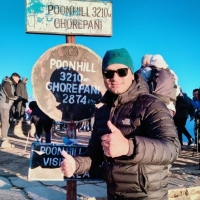
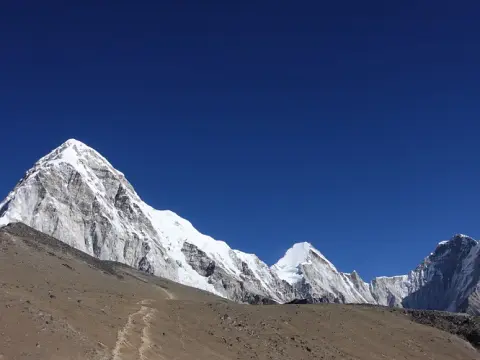
Everest Base Camp Trek: OverviewActually, Everest Base Camp Trek is a world-class Himalayan trek in Nepal. It leads to the foot of Mount Everest...
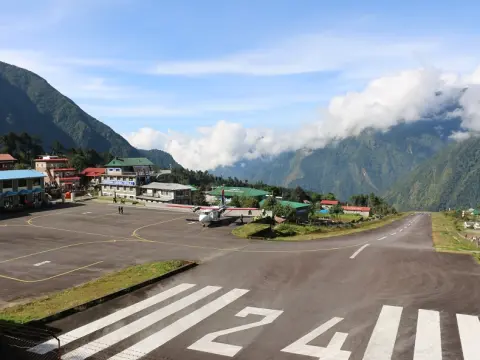
IntroductionLukla is a small but vital hill town in Nepal's Solukhumbu District of northeastern Nepal. At 2,860 meters (9,383 feet) elevation, it is t...
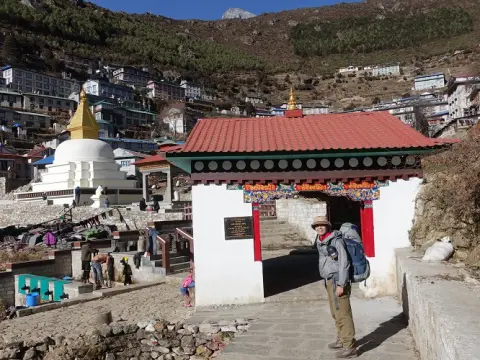
Introduction Namche Bazaar is a lively town in the Everest region. It is situated at 3,440 meters above sea level. The village is the main tradin...

IntroductionTo begin with, Tengboche is a village standing at 3,867 meters above sea level in Nepal. It is famous for the Tengboche Monastery, one of...
